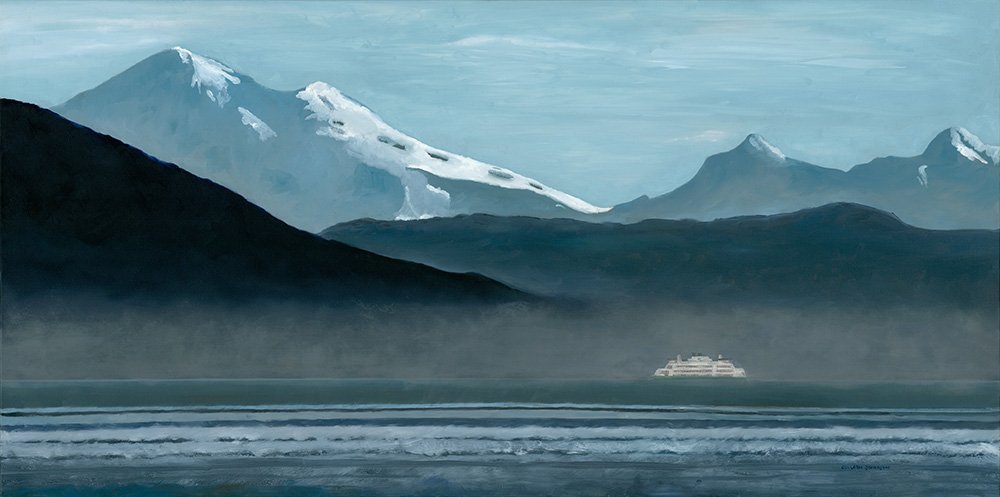Fine Art Prints: A Buying Guide
This painting has been printed on semi-gloss paper.
Art prints are images that printers create using a hard surface. That surface could be wood or a metal plate, paper, canvas, or glass.
Methods to create high-quality art prints vary significantly, allowing artists to create distinct styles and appearances.
PAPER
Paper is the most common type of art print. Paper prints are typically made on high-quality art paper, providing a smooth and crisp finish. The type of paper used depends on the look and feel that the artist is looking for.
•Cotton Rag Paper: Made from cotton fibers, this archival-quality paper is a favorite among artists. It is known for its durability, texture, and ability to hold color well. Cotton rag paper comes in various weights and textures, providing options for artists seeking different finishes. This is one I like for my art.
•Watercolor Paper: Is commonly used for fine art printing, especially when artists want to reproduce the look and feel of watercolor paintings. It has a textured surface that enhances the appearance of brushstrokes and gives a traditional, artistic quality to the prints.
•Matte Paper: Has a non-reflective surface, making them suitable for prints where glare is a concern. They provide a softer finish and are ideal for artworks that do not require the intense contrast and vibrancy seen in glossy prints.
•Glossy Paper: Offers a smooth, reflective surface that enhances color saturation and contrast. They are commonly used for photographic prints where a high-gloss finish is desired. Glossy papers can provide a contemporary and vibrant look to the artwork.
•Luster/Semi-Gloss Paper Strikes a balance between matte and glossy finishes. They offer good color saturation and sharpness while reducing glare. Luster papers are often chosen for a compromise between the characteristics of matte and glossy papers. I generally like this for my open edition prints.
GICLEE - pronounced “zhee-clays,”
Giclée is a type of fine art print made by large format digital printers. These printers use small sprayers to precisely apply printing ink and create a quality print from a high-resolution digital image. The sprayed ink is like an airbrush to achieve an extremely accurate reproduction.
The word Giclée is a French term meaning “to spray.” Giclée prints can last 100 years or more if you care for them properly.
CANVAS
Canvas prints offer a more textured effect. Canvas prints have gained popularity for their ability to mimic the texture and appearance of original paintings. The image is printed directly onto canvas using high-quality inks, and the canvas is stretched over a wooden frame. This format provides a tactile and visually appealing alternative to traditional paper prints. Canvas prints are durable and can be displayed without glass, giving them a more authentic and contemporary feel.
EDITIONS
Limited editions in the context of fine art prints often follow certain protocols to maintain the exclusivity and collectability of the prints. Art prints are categorized based on their edition.
•One of One: is a one-of-a-kind piece. That makes it particularly special and unique. So, if I have one of my paintings printed, then proceed to paint on that print, say add color, or an object, or writing and do not do that to any other print, it is now a 1/1 or one of one. This would make it more valuable than an open print or a limited print.
•Artist’s Proof (A/P)
While printing, plates tend to wear off. During printing, every now and then an artist pulls a print from the edition to check the state of the printing plate. These prints cannot be returned to the edition. One artist’s proof is usually taken as soon as the printing begins. It’s the first print that comes off the plate to ensure everything is the way artist’s envisioned it to be. Others can be pulled at any time during the print run. Even though they look completely the same as any other print from the same edition, since artist’s proofs only make around 10% of the edition, they are considered to be more exclusive than regular prints.
•Limited edition; are prints that are produced in a specific quantity. They are usually signed and numbered by the artist, adding an element of exclusivity. When you see something like this on a print 5/100 that means it is the fifth copy of only 100 printed. Legally no more than one hundred copies can be printed.
Each print in a limited edition is almost always signed by the artist, and should closely resemble the others in terms of color, quality, and overall appearance It should have a Certificate of Authenticity (COA): Title, Artist’s name, edition size, print number and the amount paid for that print.
Common edition sizes range from as few as 5 prints to several hundred, depending on the artist's intent and the demand for the artwork. Smaller editions often increase the exclusivity and desirability of the prints.
These types of prints often follow a tiered pricing structure. As the edition sells out or reaches specific milestones, the price of the remaining prints may increase. Once the predetermined number of prints in an edition has been reached, the edition is considered closed or retired.
The rules of limited editions are established by the artist or publisher and are integral to maintaining the integrity and value of the prints.
•Open editions: Simply put unnumbered. This is what I and most of my artist community use. It keeps the price down. And I do not need to keep spreadsheets of how many of each print I have printed. Just keeping track of inventory of prints is plenty of work for most artists.
Other methods of reproducing art are Lithographs, Serigraphy (Screen Printing), Etchings, Woodcuts and Wood Engravings, Photogravure and Collagraphs. There most likely are other ways to reproduce art too. However, I am stopping here.
From traditional methods to cutting-edge technologies, the world of fine art prints has evolved significantly. There is much to choose from.
